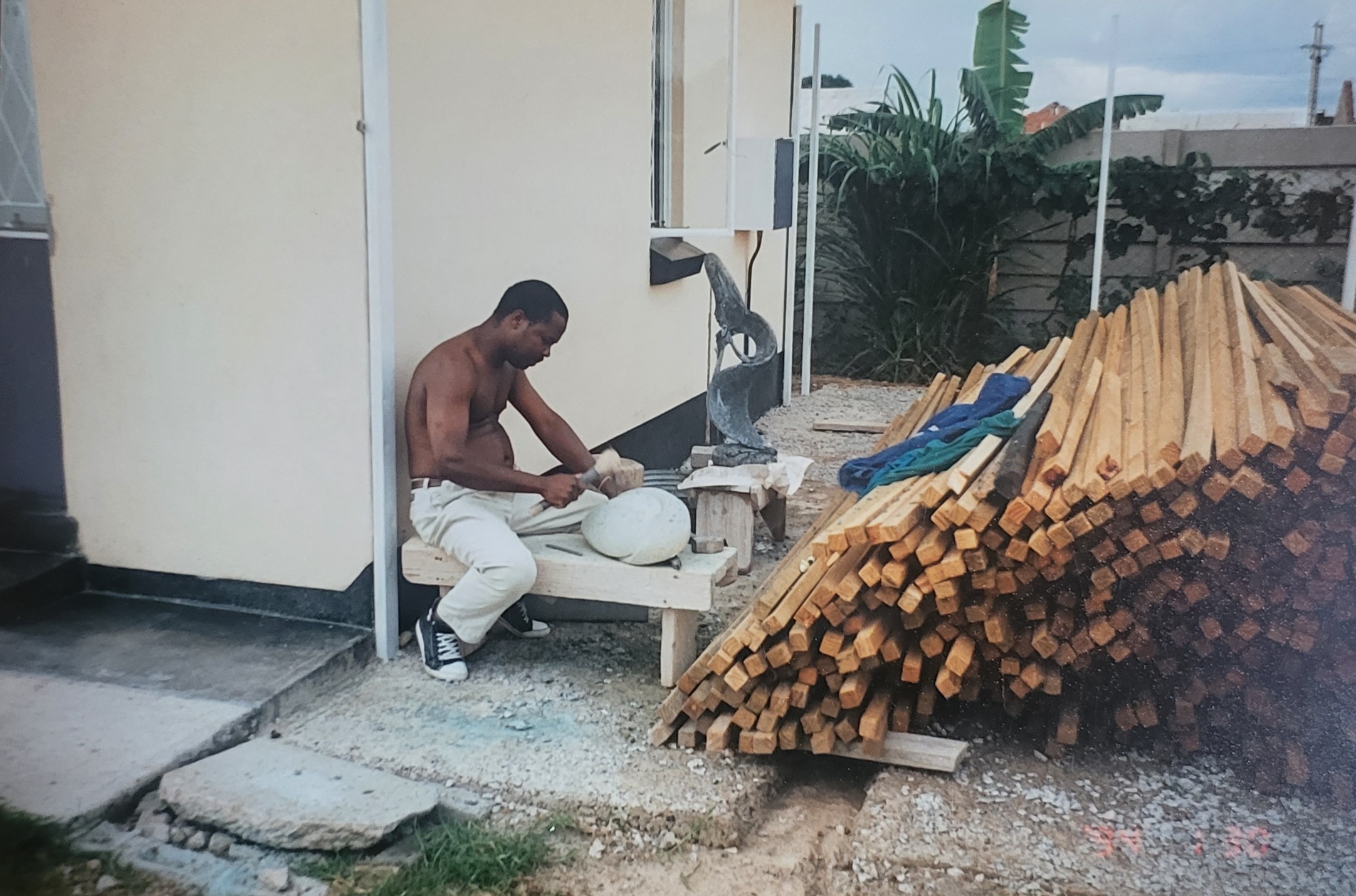The collection was started in the late 1990s. It was designed by Mrs Patricia McEnery, who like me had a passion for Zimbabwean sculpture. The collection was first displayed in Schaan Liechtenstein,
where it attracted many visitors. One notable group of visitors was the class of Robyn,
Like this my children learnt to enjoy art as a whole and are able to identify with it as it not unattainable like an expensive painting hidden behind glass.
In 2007, the collection was moved to Thundorf in Switzerland.
The two huts that you can see in the photos were actually constructed by Pat
The collection showcases the animals that are found in Zimbabwe, several busts, and a village where 90 percent are carvings from Sam. Sam concentrated on making contemporary modern art pieces of actual daily life. He delved into spiritualism, and the pieces he made definitely conveyed the life of people in Zimbabwe at that time.
Many of the artists did not sign their work, and we do not know who did the work. However, all the pieces are magnificent and are all in our collection named after Sam Kuve's Mapiti.
Most of the pieces are Shona Sculptors, but as 20% of the population is Ndebele, we cannot say all of the pieces are only Shona Sculptures. Shona makes up 80% of the population, which includes Karanga - Southern Shona, Zezuru - Central Shona, Korekore - Northern Shona, Manyika - Eastern Shona. What is certain is these are Zimbabwean sculptures. There are few other places in the world where there is such a proliferation of excellent artists as in Zimbabwe.
Most of the pieces were sculpted in Harare, which in 2022 had about 1.5 million people. However, we were lucky enough to collect some wooden pieces saved from a campfire in the area of Mutare in the Eastern Highlands of Zimbabweas well as some other pieces from Victoria Falls - Mosi-oa-Tunya.
You will find references to ""Great Zimbabwe"", which would definitely be worth visiting should you visit this wonderful country, as ""Great Zimbabwe"" had a great influence on the sculptors of Zimbabwe. Shona Mythology is also an important factor. Earlier sculptors based a great deal of their work on mythology. Sam Kuve also based his works partly on mythology, such as the Rhino spirit man, as well as life in general and how he lived and experienced it.
We hope you enjoy the experience of exploring the Zimbabwean sculpture collection named after Sam Kuve's Mapiti.
Dennis Ruf




